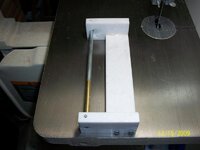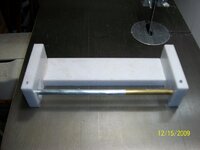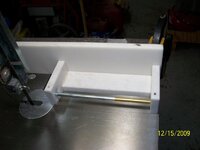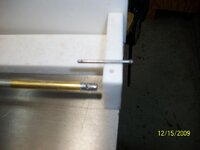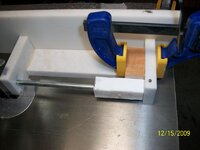pmpartain
Member
This is a half baked idea I thought of for the Celtic knot or any other symetrical segment pattern. I started to actually try this out, but thought I'd bounce it off the wall before I went to the trouble.
Step 1 turn the blank round to 7/8 or 3/4.
Step 2 get 3/4 or 7/8 inch hex or square nut probably coarse thread to affix to each end of the blank. I'm pretty sure that a 3/4 nut is slightly undersized and the 3/4 bolt is what is pretty close to 0/75, but the nut could actually thread onto the pen blank. The nut should have the pen blank almost perfectly centered and you are guaranteed perfect rotation of the blank for cutting slots whether it is 90 degrees for the square nut or 60 degrees for the hex. I suppose you could find an 8 sided nut as well. ACME threads might work too.
Step 3 proceed as normal. I plan to drill on the lathe with a Beall chuck after the segmenting is done. Should be a pretty good way to get a near perfect pattern I think.
Not exactly a ground breaking idea and someone may have already suggested this. If someone has tried it, I would like to know how the pen turned out.
Any thoughts? Is this a hair brain plot?
Thanks
Step 1 turn the blank round to 7/8 or 3/4.
Step 2 get 3/4 or 7/8 inch hex or square nut probably coarse thread to affix to each end of the blank. I'm pretty sure that a 3/4 nut is slightly undersized and the 3/4 bolt is what is pretty close to 0/75, but the nut could actually thread onto the pen blank. The nut should have the pen blank almost perfectly centered and you are guaranteed perfect rotation of the blank for cutting slots whether it is 90 degrees for the square nut or 60 degrees for the hex. I suppose you could find an 8 sided nut as well. ACME threads might work too.
Step 3 proceed as normal. I plan to drill on the lathe with a Beall chuck after the segmenting is done. Should be a pretty good way to get a near perfect pattern I think.
Not exactly a ground breaking idea and someone may have already suggested this. If someone has tried it, I would like to know how the pen turned out.
Any thoughts? Is this a hair brain plot?
Thanks

